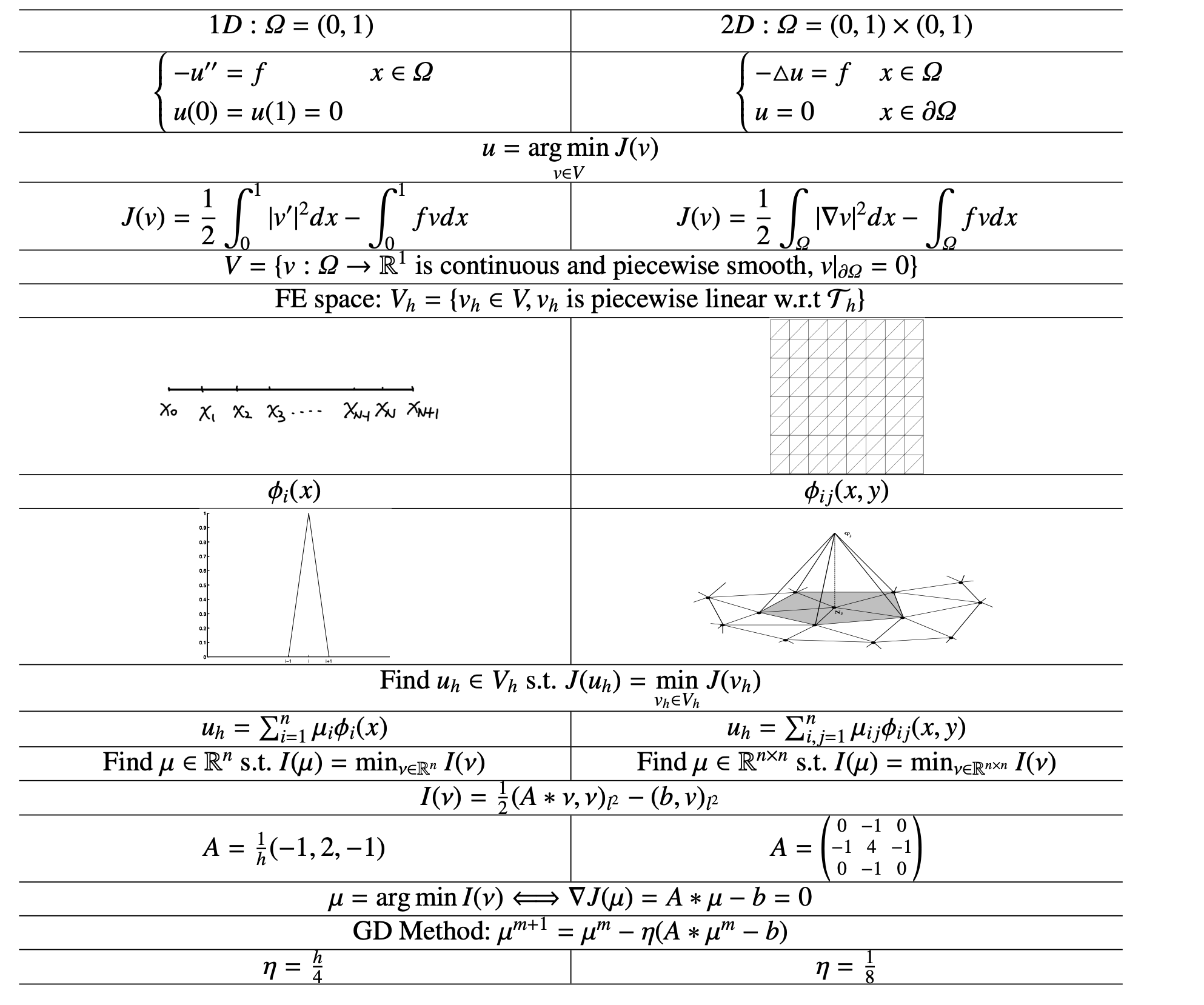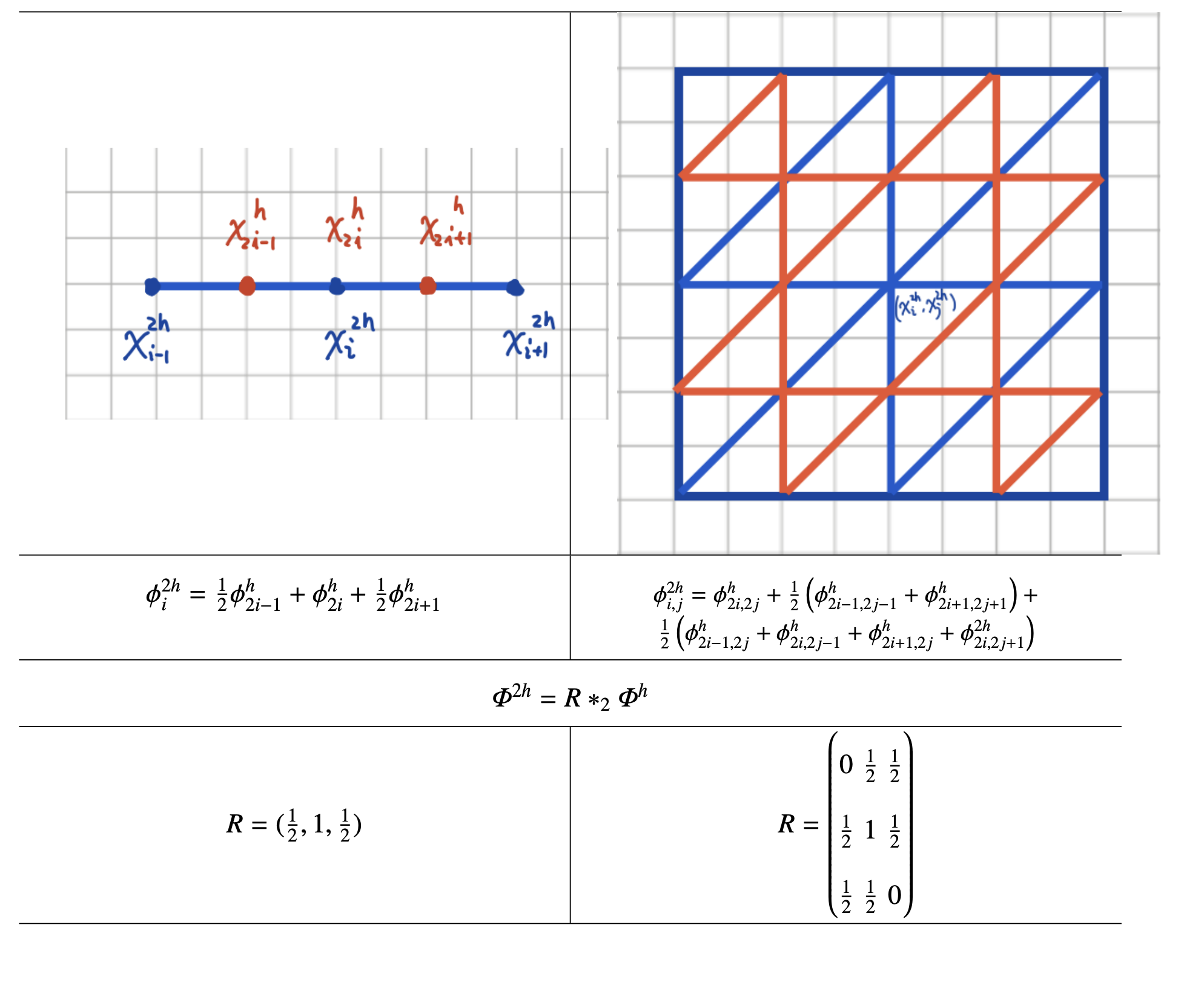MgNet: a special CNN based on multigrid method¶
-->Please access the video via one of the following two ways
1D and 2D Finite Element and Multigrid¶
1D and 2D Comparison for Finite Element and Multigrid

Basic multigrid components

Multigrid algorithm for \(A * \mu=f\)¶
Algorithm 10 (A multigrid algorithm \(\mu=\operatorname{MG} 1\left(f ; \mu^{0} ; J, v_{1}, \cdots, v_{J}\right)\))
Set up:
Smoothing and restriction from fine to coarse level (nested)
For \(\ell=1: J\) do
For \(i=1: v_{\ell}\) do
EndFor
Form restricted residual and set initial guess:
EndFor
Prolongation and restriction from coarse to fine level
For \(\ell=J-1: 1\) do
EndFor
Remark
The above multigrid method for the linear problem \(A * \mu=b\) is independent of the choice of the interpolation operation \(\Pi_{\ell}^{\ell+1}: \mathbb{R}^{n_{\ell} \times n_{\ell}} \mapsto \mathbb{R}^{n_{\ell+1} \times n_{\ell+1}}\) and in particular, we could take \(\Pi_{\ell}^{\ell+1}:=0\). But such an operation is critical for nonlinear problems.
MgNet¶
Algorithm 11 (\(\mu^{J}=\operatorname{MgNet} 1\left(f ; \mu^{0} ; J, v_{1}, \cdots, v_{J}\right)\))
Set up:
Smoothing and restriction from fine to coarse level (nested)
For \(\ell=1: J\) do
\(\quad\)
For \(i=1: v_{\ell}\) do
EndFor
Form restricted residual and set initial guess:
EndFor
